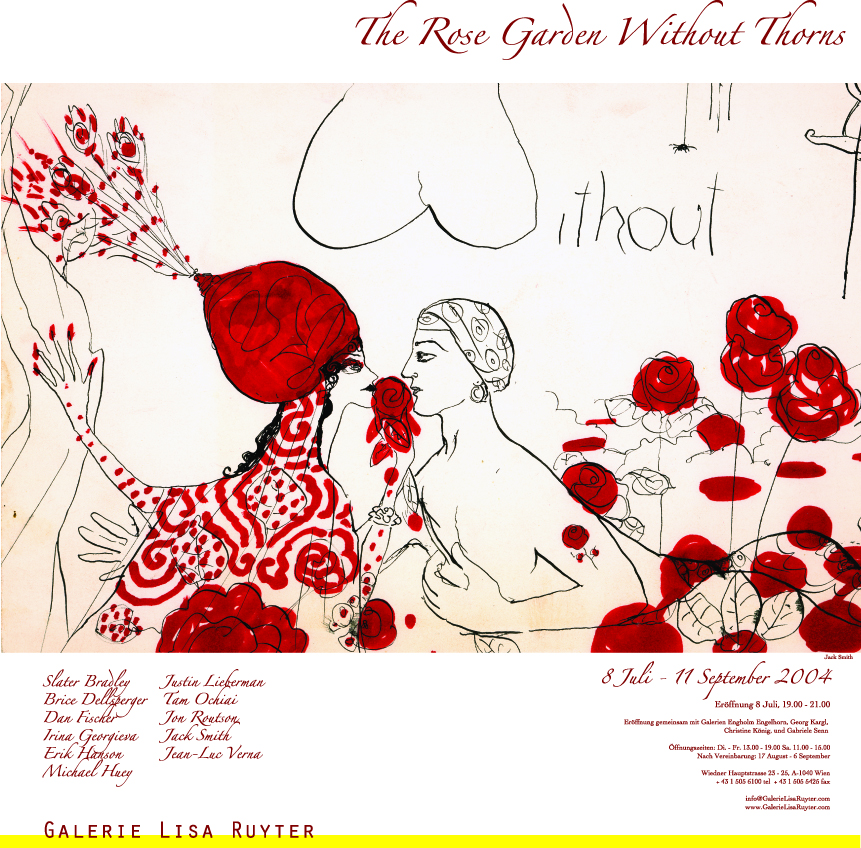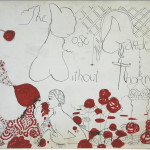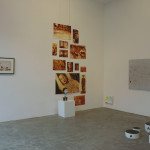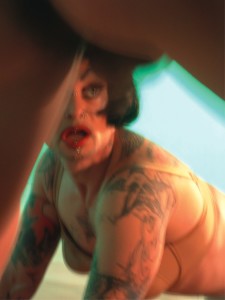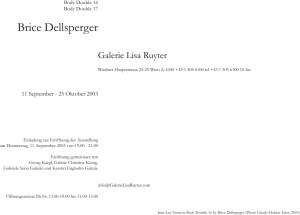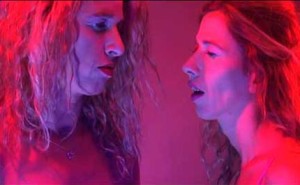„The Rose Garden without Thorns“
8 July – 11 September 2004
Slater Bradley, Brice Dellsperger, Dan Fischer, Irina Georgieva, Erik Hanson, Michael Huey, Justin Lieberman, Tam Ochiai, Jon Routson, Jack Smith, Jean-Luc Verna
This show is about the richly complicated relationships that artists have with each other. It is not a show about appropriation, theft or homage, but these strategies are certainly addressed. The emphasis here is on figuration rather than abstraction in art objects. The inspiration for “The Rose Garden Without Thorns” is a drawing made by Jack Smith, the underground filmmaker whose spirit runs throughout Andy Warhol’s network of ‘superstars’.
Slater Bradley has made many series using a Doppelgänger as a stand in for himself, and also for Kurt Cobain, Michael Jackson and Ian Curtis.
Brice Dellsperger remakes scenes from movies using the same actor for every part in the scene. Often the actors are playing their parts in drag, confusing identifications and identities.
Dan Fisher makes very tight renderings of well known photographs of artists.
Irina Georgieva is making pieces she considers diaristic, combining images of artworks with images from her childhood in Sofia. All are distilled to a commonality of technique and then subject to her train of consciousness associations.
Erik Hanson deliberately quotes the music that defined him as the subject of all of his work.
Having recently completed a massive genealogical study of his family, Michael Huey is now re-photographing odd remnants he has come across, including receipts for death certificates, or a drawing of the stars made by a grandmother.
Justin Lieberman references artists and musicians in combinations he finds interesting. He reimagines Henry Darger landscapes populated by Jock Sturges’ adolescent girls and Paul McCarthy’s monsters.
Tam Ochiai makes work that references cinema, music, artists, and even galleries, museums and museum gift shops. He once made a sculpture of Gilbert and George’s singing sculpture.
Jon Routson has made a twenty minute version of Matthew Barney’s Cremaster 4, edited for TV, and interspersed with commercials.
Jean-Luc Verna has starred in many of Brice Dellsperger’s films. His own work is very much about his body, he makes drawings that are made the way tattoos are made and refer to something he loves.
